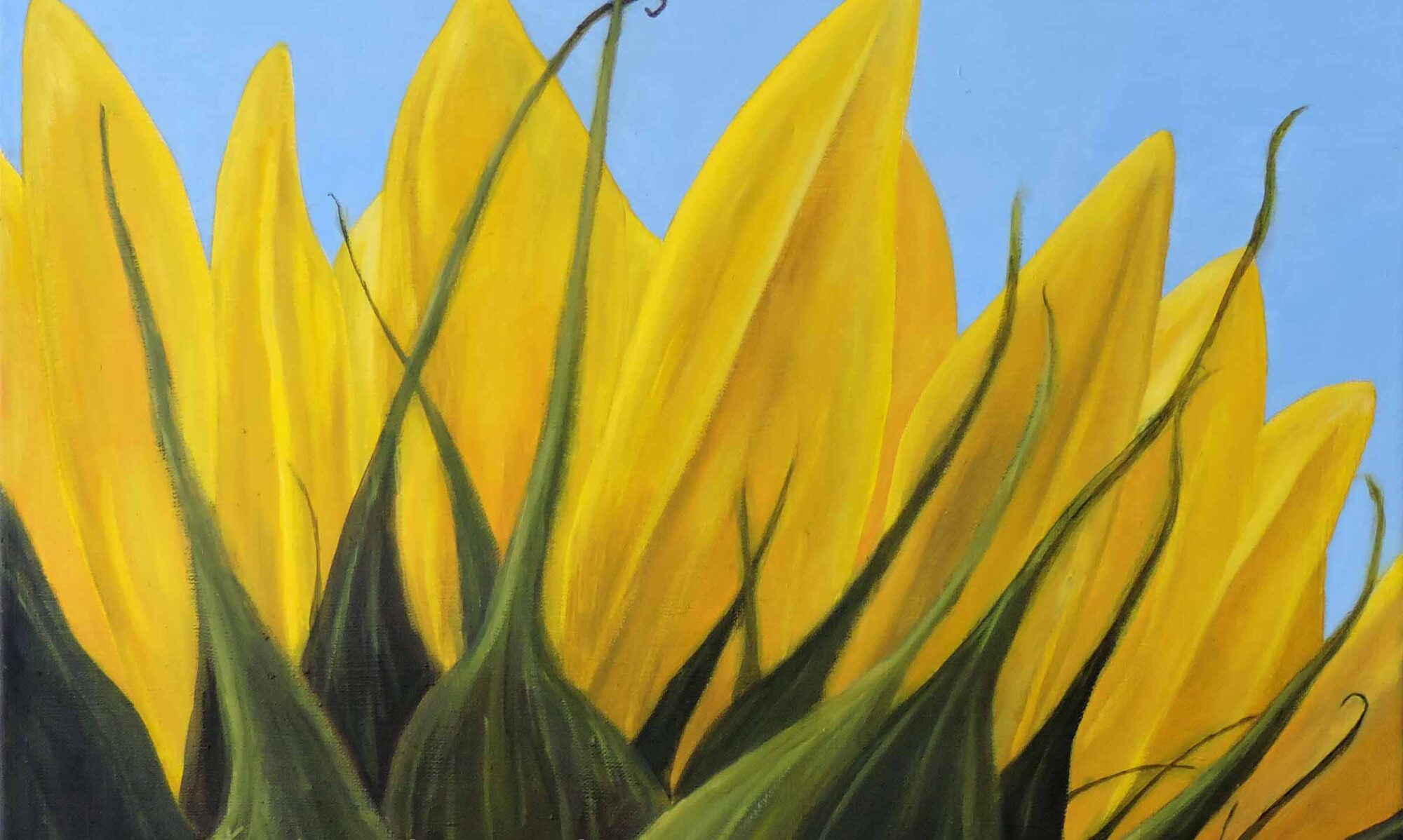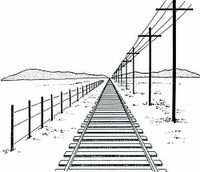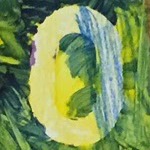
0 GROUP | 95 ASCII CHARACTERS
Quick links to more art terms and definitions are located at the end of the list.
0 Group
An influential post-war art movement that emerged in Germany in the late 1950s and continued into the 1960s. The 0 Group sought to redefine art in the aftermath of World War II, moving away from the emotional and subjective styles of the time. Their focus was on minimalist and kinetic art.
0-Point Perspective
A technique used to create the illusion of depth in a two-dimensional artwork without using vanishing points. This method is particularly effective for depicting natural scenes like landscapes, where there are no parallel lines converging in the distance. Also referred to as atmospheric perspective.
1-Bit Art
A digital art style that uses only two colors, typically black and white, to create images. Each pixel in a 1-bit image can be either on or off, creating a highly stylized and minimalist aesthetic.
1:1 Scale
A drawing or model that is the same size as the object it represents. In other words, the dimensions of the artwork are identical to the dimensions of the actual object, making it a life-size representation.
1:2 Aspect Ratio
A rectangular aspect ratio often used in design and photography. A 1:2 aspect ratio means that the width of an image or artwork is half its height. This creates a tall, narrow composition, which can be quite striking and dramatic.
1-Point Perspective
A type of linear perspective used in drawing to create the illusion of depth on a flat surface. It involves a single vanishing point on the horizon line, where all parallel lines converge. This technique is particularly useful for drawing scenes like roads, railways, or interiors, where the viewer is looking straight ahead.
10-Bit Art
Digital artwork that utilizes a 10-bit color depth. This means each color channel (red, green, and blue) can display 1,024 shades, resulting in over 1 billion possible colors. This is a significant increase from the 16 million colors available in 8-bit color depth. 10-bit color depth allows for smoother gradients and more subtle color transitions.
10th Street Galleries
A collective of artist-run, cooperative galleries in New York City during the 1950s and 1960s that were central to the Abstract Expressionist movement. These galleries emerged as an avant-garde alternative to the more conservative and commercial galleries on Madison Avenue and 57th Street.
12-Bit Art
Digital artwork that uses a 12-bit color depth. This means each color channel (red, green, and blue) can display 4,096 shades, resulting in over 68 billion possible colors. This is a substantial increase from the 1 billion colors available in 10-bit color depth.
16-Bit Art
Digital artwork that uses a 16-bit color depth. This means each color channel (red, green, and blue) can display 65,536 shades, resulting in over 281 trillion possible colors. This is a significant increase from the 68 billion colors available in 12-bit color depth.
2-Bit Art
Digital artwork that uses a 2-bit color depth. This means each pixel can display one of four possible colors. In a 2-bit system, each pixel is represented by 2 bits of data. Since each bit can be either 0 or 1, the 2 bits can form four possible combinations: 00, 01, 10, and 11. Each of these combinations corresponds to a different color. Here’s a breakdown:
-
- 00: Color 1
- 01: Color 2
- 10: Color 3
- 11: Color 4
This means that with 2 bits per pixel, you can only have four distinct colors in your image. This limited palette requires creative use of these colors to convey the desired visual effect.
2-Point Perspective
A type of linear perspective used in drawing to create the illusion of depth and volume on a flat surface. 2-point perspective involves two vanishing points on the horizon line, where parallel lines appear to converge. This method is particularly useful for drawing objects or scenes viewed from an angle, such as buildings or interiors.
2D Barcode Art
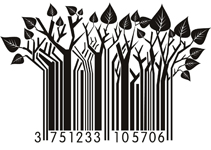
Artwork that involves creating artistic designs using 2D barcodes, such as QR codes or Data Matrix codes. These barcodes are typically used for storing information that can be scanned and read by devices like smartphones. However, artists have creatively repurposed them to produce visually interesting and interactive pieces.
2D barcode art not only looks visually appealing but also retains the functionality of the barcode, allowing it to be scanned and decoded. Viewers can interact with the art by scanning the barcode, which might lead to a website, a piece of text, or another digital experience. This form of art often incorporates modern technology and can be seen as a blend of digital and traditional art forms.
2D Design
The creation of two-dimensional visual representations or drawings. In 2D design, objects and elements are typically represented on a flat plane, such as a piece of paper or a computer screen, with width and height dimensions.
24-Bit Art
Digital artwork that uses a 24-bit color depth. This means each pixel in the image can display one of 16.7 million possible colors. In a 24-bit system, each color channel (red, green, and blue) is allocated 8 bits, allowing for 256 shades per channel. The wide range of colors allows for highly detailed and vibrant images. In addition, the large number of possible colors ensures smooth transitions and gradients, which can be particularly beneficial for creating realistic and nuanced artwork.
3/4 View (in art)
A perspective in which the subject is angled slightly away from the viewer, presenting more of one side. This viewpoint exposes both the front and a portion of the side, lending a sense of depth and dimensionality. Artists frequently employ this perspective in portraiture to give the subject a more dynamic and captivating appearance.
3-Bit Art
Digital images that use a 3-bit color depth, meaning each pixel can display one of 8 possible colors or shades of gray (since (2^3 = 8)). Early computer graphics and video games often used this limited color palette due to hardware constraints that necessitated fewer colors.
3-Point Perspective
A type of perspective drawing that uses three vanishing points to create a sense of depth and dimension. This method is particularly useful for depicting objects from extreme viewpoints, such as looking up at a tall building or down from a high vantage point.
3D Art
Artwork that occupies physical space with height, width, and depth, allowing viewers to see it from multiple angles. Artists create this type of art using various materials and techniques, including forms like sculpture and installation art.
3D Rendering
The process of converting 3D models into 2D images on a computer. This involves creating a photorealistic or stylized image from a 3D model by adding textures, lighting, and other effects.
32-Bit Art
Digital art where each pixel is represented by 32 bits, allowing for over 4 billion possible colors. This provides extremely high detail and color accuracy. Artists often use 32-bit art in HDR (High Dynamic Range) photography, digital painting, and 3D rendering.
4-Bit Art
Digital artwork that uses a 4-bit color depth. This means each pixel in the image can display one of 16 possible colors. In a 4-bit system, each pixel is represented by 4 bits, allowing for combinations that result in 16 distinct colors. 4-bit art often has a nostalgic, retro feel, reminiscent of early computer graphics and video games.
4-Color Process
A widely used printing technique that uses four ink colors—Cyan, Magenta, Yellow, and Black (CMYK)—to produce a full range of colors. Also known as CMYK printing.
4-Color Separation
A process used in printing to reproduce full-color images. It involves separating an image into four different color channels: Cyan, Magenta, Yellow, and Black (CMYK). Each channel is printed separately, and when combined, they create the full spectrum of colors in the final image.
4-Point Perspective
A drawing technique that creates a highly realistic and immersive view by incorporating four vanishing points. This method is particularly useful for depicting wide-angle scenes, such as cityscapes or panoramic views, and can create a fisheye lens effect. Also known as curvilinear or infinite-point perspective.
4D Art
Artwork that incorporates the element of time along with the traditional three dimensions of space (height, width, and depth). This type of art can include movement, change, and interaction over time, creating a dynamic and immersive experience for the viewer. Often seen in digital and interactive media.
4th Dimension
A concept in art that explores the idea of time and space beyond the traditional three dimensions (height, width, and depth). The fourth dimension in art opened up new possibilities for visual expression, allowing artists to challenge traditional perspectives and explore deeper philosophical and scientific ideas. Often associated with Cubism and Futurism.
43 Group
A pioneering modern art movement formed in Colombo, Sri Lanka (then Ceylon) in 1943. The group was established by a collective of young, pro-independence artists who sought to break away from the conservative and academic art practices of the time. The 43 Group’s efforts marked a historic shift in Sri Lankan art, blending local cultural elements with modernist techniques to create a unique and progressive artistic identity.
5-Point Perspective
A type of perspective drawing that uses five vanishing points to create a 360-degree view. This technique allows for a highly immersive and spherical representation of a scene, capturing a wide-angle view that curves around the viewer. Also known as curvilinear or fisheye perspective. This technique can add a dynamic and dramatic effect to your artwork, especially when capturing expansive scenes or complex compositions.
6-Color Printing
An advanced printing technique that expands the traditional CMYK (Cyan, Magenta, Yellow, Black) color model by adding two additional colors, typically Orange and Green (CMYKOG). This method enhances the color gamut, allowing for more vibrant and accurate color reproduction. 6-color printing can significantly enhance the visual impact of printed materials, making it a valuable tool for artists and designers who require superior color reproduction. Also known as hexachrome printing.
6-Point Star
A geometric shape formed by two intersecting equilateral triangles. This shape is rich in symbolism and has been used in various cultural, religious, and artistic contexts. Its adaptability and profound symbolism render it an influential component in diverse forms of artistic expression, captivating artists from various disciplines. Also known as a hexagram.
7-Color Palette
A selection of seven distinct colors used together in a composition. This type of palette can help create harmony, contrast, and visual interest in an artwork. Artists often choose a 7-color palette to explore a wide range of hues and tones while maintaining a cohesive look. Key aspects of a 7-color palette are:
-
- Primary Colors: Red, blue, and yellow, which can be mixed to create other colors.
- Secondary Colors: Green, orange, and purple, which are created by mixing primary colors.
- Additional Color: An extra color that can be a tertiary color (like yellow-green or blue-violet) or a neutral color (like black, white, or gray) to add depth and variety.
Group of 7
A collective of Canadian landscape painters (also known as the Algonquin School) who were active from 1920 to 1933. They are renowned for their distinctive style and their dedication to capturing the rugged beauty of the Canadian wilderness. Their paintings often depicted the dense forests, lakes, and mountains of Canada, emphasizing the natural beauty and spiritual essence of the landscape.
8-Bit Art
Digital artwork where each pixel is represented by 8 bits, allowing for 256 possible colors. This style is reminiscent of early computer and video game graphics, where hardware limitations restricted the number of colors and resolution available.
9-Point Perspective
An advanced drawing technique that uses nine vanishing points to create a highly immersive and distorted view, often resulting in a spherical or panoramic effect. This method is an extension of curvilinear perspectives like 4-point and 5-point perspectives, but with even more complexity and depth.
9th Street Art Exhibition
A groundbreaking art show held in 1951 in New York City. This exhibition marked the formal debut of Abstract Expressionism, the first American art movement to gain international influence. The event established New York as a center for modern art and launched the careers of many artists associated with the movement. It was not just an art show but a cultural milestone that helped redefine the global art landscape.
95 ASCII Characters
(Stands for American Standard Code for Information Interchange.)
The 95 characters in the ASCII character set that can be displayed on screen or printed on paper. These characters are the building blocks of written text and other visual content. They include letters, numbers, symbols, and punctuation marks.
-
- Digits (0 to 9):
0, 1, 2, 3, 4, 5, 6, 7, 8, 9 - Uppercase Letters (A to Z):
A, B, C, D, E, F, G, H, I, J, K, L, M, N, O, P, Q, R, S, T, U, V, W, X, Y, Z - Lowercase Letters (a to z):
a, b, c, d, e, f, g, h, i, j, k, l, m, n, o, p, q, r, s, t, u, v, w, x, y, z - Punctuation Marks and Symbols:
! ” # $ % & ’ ( ) * + , – . / : ; < = > ? @ [ \ ] ^ _ ` { | } ~
- Digits (0 to 9):
You May Also Like
This art terms and definitions 0-9 glossary is provided as a valuable resource for art enthusiasts. If you like the information here and find it helpful, please consider purchasing a painting. Your support helps to cover the cost of keeping this art words and explanation lexicon online. Simply click or tap the thumbnail link of any Teresa Bernard oil painting to view additional details.
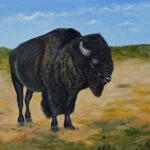
(2020)
24″ w x 18″ h
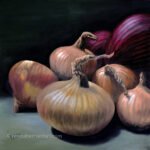
18″ w x 18″ h
Art Glossary Quick Links
Contributing to The Art Dictionary
This art terms 0-9 index is a work in progress. New art terms and definitions are added on a regular basis. If you know of an art term and definition that isn’t already listed in it, but you believe it should be, send it to us and we’ll consider adding it. We’ll let you know if we do. Thanks!
Thanks for reading this!
